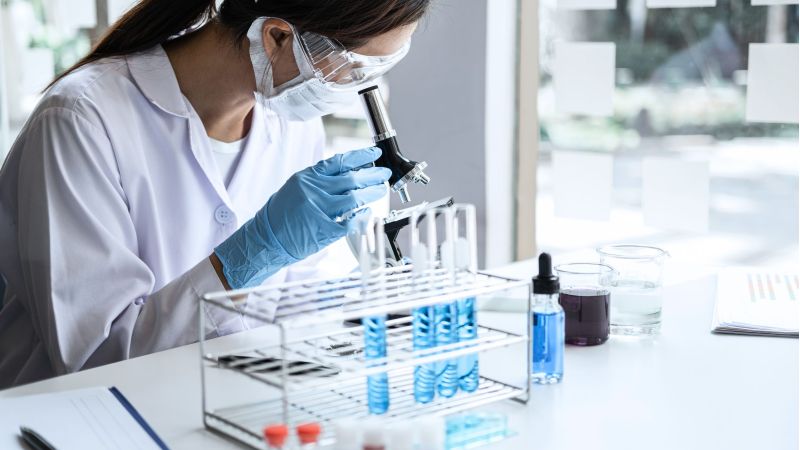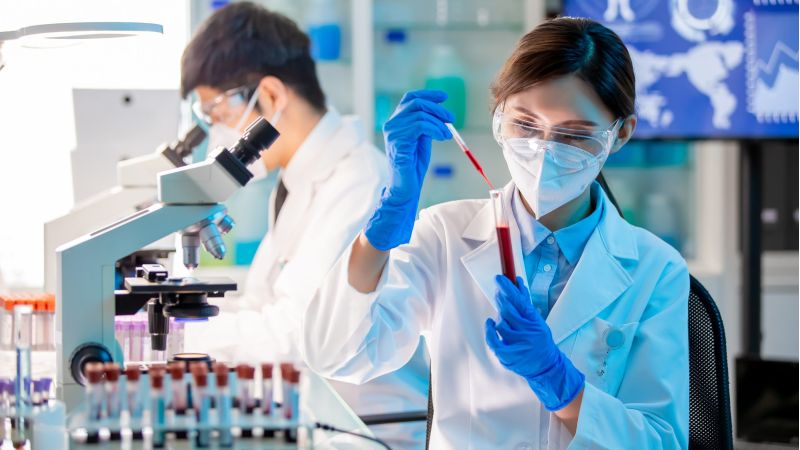
Understanding the Fundamental Hallmarks of Aging – A Closer Look
Aging is a natural process that all living organisms experience. As you age, your body undergoes a series of changes that can impact your health and quality of life. To better understand these changes, scientists have identified nine fundamental hallmarks of aging. These hallmarks provide valuable insights into the underlying mechanisms of aging and offer potential targets for interventions to promote healthy aging.
“Intrinsic aging is due to genetic factors, while extrinsic aging can be attributed to lifestyle choices like alcohol consumption, smoking, diet, exercise and stress management.” Dr. Neil Paulvin, Regenerative Medicine Doctor
The Science Behind Aging
Aging is a complex and multifactorial process influenced by a combination of genetic and environmental factors. At the cellular level, aging is characterized by a gradual decline in the function of various biological processes. Understanding the biological mechanisms of aging is crucial for developing strategies to mitigate its negative effects.
Aging is not a simple linear process; rather, it involves a progressive decline in the ability of cells, tissues, and organs to maintain physiological homeostasis. This decline is influenced by a range of factors, including DNA damage, protein dysfunction, and cellular senescence. Over time, these cellular changes can lead to the development of age-related diseases.
One of the key factors contributing to aging is DNA damage. With age, the DNA becomes more susceptible to damage from various sources, such as environmental toxins, radiation, and oxidative stress. This damage can result in mutations and errors in DNA replication, leading to cellular dysfunction and ultimately contributing to aging.
Another important aspect of aging is protein dysfunction. Proteins are essential for the proper functioning of cells, and their misfolding or aggregation can have detrimental effects. As you age, the quality control mechanisms responsible for maintaining proper protein folding and function become less efficient, leading to the accumulation of damaged proteins. This protein accumulation can disrupt cellular processes and contribute to the overall decline in cellular function associated with aging.
Cellular senescence is also a significant contributor to the aging process. Senescence refers to a state in which cells lose their ability to divide and function properly. This can occur due to various factors, including DNA damage, telomere shortening, and cellular stress. Senescent cells can accumulate in tissues over time, secreting harmful molecules that can promote inflammation and tissue dysfunction. The presence of senescent cells has been linked to age-related diseases and overall aging.
The Role of Genetics in Aging
Genetics plays a significant role in determining an individual’s rate of aging. Certain genes have been identified as key regulators of the aging process. For example, variations in genes involved in DNA repair mechanisms can impact an individual’s susceptibility to age-related diseases.
One such gene is the tumor suppressor gene p53, which plays a crucial role in DNA repair and cell cycle regulation. Mutations in the p53 gene can impair its function, leading to an increased risk of DNA damage accumulation and accelerated aging. On the other hand, certain genetic variations in genes involved in antioxidant defense mechanisms, such as the superoxide dismutase gene, have been associated with increased longevity and reduced risk of age-related diseases.
It is important to note that while genetics can influence the rate of aging, it is not the sole determinant. Environmental factors also play a significant role in the aging process.
Environmental Factors Influencing Aging
In addition to genetics, environmental factors also contribute to the aging process. Factors such as diet, exercise, and exposure to toxins can modulate the rate of aging.
Dietary choices have a profound impact on aging. A diet rich in fruits, vegetables, whole grains, and lean proteins provides essential nutrients and antioxidants that can help protect against cellular damage and promote healthy aging. On the other hand, a diet high in processed foods, saturated fats, and sugar can contribute to inflammation, oxidative stress, and accelerated aging.
Regular physical activity is another crucial factor in healthy aging. Exercise has been shown to have numerous benefits, including improved cardiovascular health, enhanced cognitive function, and reduced risk of age-related diseases. Exercise can also stimulate the production of growth factors and hormones that promote cellular repair and regeneration1.
Exposure to toxins and pollutants in the environment can also accelerate the aging process. Air pollution, cigarette smoke, and certain chemicals can induce oxidative stress and inflammation, leading to cellular damage and premature aging. Minimizing exposure to these harmful substances and adopting protective measures, such as wearing sunscreen and avoiding smoking, can help mitigate their negative effects on aging.
In conclusion, aging is a complex process influenced by a combination of genetic and environmental factors. Understanding the biological mechanisms of aging and the role of genetics and environmental factors is crucial for developing strategies to promote healthy aging and mitigate the negative effects of aging-related diseases.
The Nine Hallmarks of Aging
Scientists have identified nine hallmarks that contribute to the aging process. These hallmarks encompass a range of cellular and molecular changes that occur during aging.
Understanding these hallmarks is crucial for developing interventions that can slow down or reverse the aging process, ultimately improving health and extending lifespan.
1. Genomic Instability
Genomic instability refers to the increased susceptibility of DNA to damage and mutation. As we age, our DNA becomes more prone to errors and breaks, leading to genomic instability. This instability can result in the accumulation of genetic mutations, contributing to the development of age-related diseases, such as cancer.
Various factors, including exposure to environmental toxins, radiation, and oxidative stress, can cause genomic instability. These factors can induce DNA damage and impair the repair mechanisms, leading to the accumulation of mutations over time.
2. Telomere Attrition
Telomeres are protective caps at the ends of chromosomes that shorten with each cell division. Telomere attrition is a hallmark of aging, as the progressive shortening of telomeres limits the replicative capacity of cells. Ultimately, this can lead to cellular senescence and tissue deterioration.
During cell division, the enzyme telomerase adds repetitive DNA sequences to the telomeres, counteracting the shortening process. However, telomerase activity is low in most somatic cells, resulting in gradual telomere attrition over time.
Shortened telomeres can trigger DNA damage responses and cellular senescence, limiting the regenerative potential of tissues and contributing to age-related diseases.
3. Epigenetic Alterations
Epigenetic alterations are changes in gene expression patterns that do not involve changes to the underlying DNA sequence. Epigenetic modifications can accumulate over time and impact gene regulation. These alterations can influence the aging process by altering the expression of genes involved in various cellular functions.
Epigenetic modifications, such as DNA methylation, histone modifications, and non-coding RNA molecules, play a crucial role in regulating gene expression. With aging, there is a progressive alteration in the epigenetic landscape, leading to changes in gene expression patterns. These epigenetic changes can affect cellular processes, including DNA repair, inflammation, and cellular senescence, contributing to the aging phenotype and age-related diseases2.
4. Loss of Proteostasis
Proteostasis refers to the cellular mechanisms responsible for maintaining protein homeostasis. With aging, there is a decline in the ability of cells to properly fold and degrade proteins. This can lead to the accumulation of misfolded proteins, which are associated with the onset of neurodegenerative diseases.
Protein quality control systems, including chaperones and proteases, help maintain the proper folding and degradation of proteins. However, with age, these systems become less efficient, leading to the accumulation of misfolded or aggregated proteins.
The accumulation of misfolded proteins can disrupt cellular function and promote the formation of toxic protein aggregates, contributing to age-related neurodegenerative diseases, such as Alzheimer’s and Parkinson’s disease.
5. Deregulated Nutrient Sensing
The body’s ability to sense and respond to changes in nutrient availability is crucial for maintaining metabolic homeostasis. During aging, there is a dysregulation in nutrient-sensing pathways, such as insulin and mTOR signaling. These alterations can contribute to metabolic dysfunction and age-related diseases, including diabetes.
Nutrient sensing pathways are vital in coordinating cellular responses to nutrient availability. Insulin signaling, for example, regulates glucose uptake and metabolism, while mTOR signaling controls protein synthesis and cell growth.
With aging, these nutrient-sensing pathways become dysregulated, leading to impaired glucose metabolism, increased insulin resistance, and altered protein synthesis. These changes can contribute to metabolic disorders and age-related diseases, such as type 2 diabetes and cardiovascular diseases.
6. Mitochondrial Dysfunction
Mitochondria are the powerhouses of our cells, responsible for producing energy in the form of adenosine triphosphate (ATP). With aging, mitochondrial function declines, leading to decreased energy production and increased production of reactive oxygen species (ROS). This mitochondrial dysfunction can contribute to cellular damage and aging-associated diseases.
Mitochondrial dysfunction can occur due to various factors, including oxidative stress, mitochondrial DNA mutations, and impaired mitochondrial biogenesis. These factors can disrupt the electron transport chain and impair ATP production.
Furthermore, dysfunctional mitochondria produce higher levels of ROS, which can damage cellular components, including DNA, proteins, and lipids. This oxidative damage can contribute to cellular senescence and the development of age-related diseases, such as cardiovascular disease and neurodegenerative disorders.
7. Cellular Senescence
Cellular senescence is a state in which cells lose their ability to divide and function properly. Senescent cells accumulate with age and secrete pro-inflammatory molecules, a phenomenon known as the senescence-associated secretory phenotype (SASP). The accumulation of senescent cells and the associated inflammation contribute to tissue dysfunction and age-related pathologies.
Various factors, including DNA damage, telomere attrition, and oncogene activation can trigger cellular senescence. Once senescence is induced, cells enter a state of irreversible growth arrest. Senescent cells secrete a variety of pro-inflammatory molecules, such as cytokines, chemokines, and growth factors. This SASP can promote chronic inflammation, disrupt tissue homeostasis, and contribute to the development of age-related diseases, including cancer, cardiovascular disease, and neurodegenerative disorders.
8. Stem Cell Exhaustion
Stem cells are responsible for tissue regeneration and repair. However, with aging, the regenerative capacity of stem cells declines. This is due to a combination of factors, including changes in their microenvironment and the accumulation of DNA damage. Stem cell exhaustion can impair tissue repair and increase the risk of age-related diseases.
Stem cells reside in specialized niches within tissues and can differentiate into various cell types. They play a crucial role in tissue homeostasis and repair by replenishing damaged or lost cells. With aging, the stem cell niche changes, leading to a decline in stem cell function. Additionally, stem cells can accumulate DNA damage over time, impairing their regenerative potential.
These changes result in reduced tissue repair and regeneration, contributing to age-related diseases, such as impaired wound healing, muscle loss, and degenerative conditions.
9. Altered Intercellular Communication
Effective communication between cells is essential for maintaining tissue homeostasis. During aging, there is a disruption in intercellular communication, leading to chronic inflammation and the impaired functioning of tissues. This altered communication can contribute to the development of age-related diseases, such as Alzheimer’s disease.
Cells communicate with each other through various signaling pathways, including direct cell-to-cell contact and the release of signaling molecules, such as cytokines and growth factors.
With aging, there is a dysregulation in intercellular communication, leading to chronic low-grade inflammation, often referred to as inflammation. This chronic inflammation can contribute to tissue dysfunction and the development of age-related diseases, including neurodegenerative disorders like Alzheimer’s disease.
Understanding and targeting the mechanisms underlying altered intercellular communication may offer potential therapeutic strategies for mitigating age-related pathologies.
The Impact of Aging on the Human Body
Aging and the Cardiovascular System
Aging is associated with structural and functional changes in the cardiovascular system. As you age, blood vessels become stiffer and less elastic, increasing the risk of hypertension and cardiovascular disease. Additionally, the heart muscle changes, leading to decreased cardiac output and increased susceptibility to heart failure.
Aging and the Nervous System
The aging process affects the nervous system, leading to various cognitive and motor changes. Age-related neurodegenerative diseases, such as Alzheimer’s and Parkinson’s disease, are characterized by the accumulation of protein aggregates and the degeneration of specific neuronal populations. These diseases can significantly impact an individual’s quality of life.
Aging and the Musculoskeletal System
With aging, there is a gradual loss of muscle mass and strength, a condition known as sarcopenia. This loss of muscle mass can affect mobility and increase the risk of falls and fractures. Additionally, aging is associated with changes in bone density, leading to an increased risk of osteoporosis.
Aging and the Digestive System
The digestive system undergoes age-related changes that can impact nutrient absorption and gastrointestinal motility. Aging can lead to a decrease in the production of digestive enzymes, making it more challenging to digest certain foods. These changes can contribute to gastrointestinal disorders, including constipation and malnutrition.
Conclusion
The nine fundamental hallmarks of aging provide valuable insights into the biological processes underlying aging. Understanding these hallmarks can help researchers develop strategies to promote healthy aging and mitigate the negative effects of aging. By adopting a holistic approach that addresses both genetic and environmental factors, you can strive to age gracefully and maintain your health and well-being as you grow older. Extend your health span by increasing your NAD+ levels with Vitality ↑® NAD+ Booster by Jinfiniti.
Lastly, if you’re interested in going deeper into health-related content, here are a few of our recent posts that you may want to read:
- Why Optimized, Precision Medicine is the Future
- What Does Peak Performance Look Like?
- Andrew Huberman is Wrong About NAD, NAD+ Precursor & Longevity
- 9 Powerful Benefits of Optimizing Your NAD
Referenced Sources:
Read More













